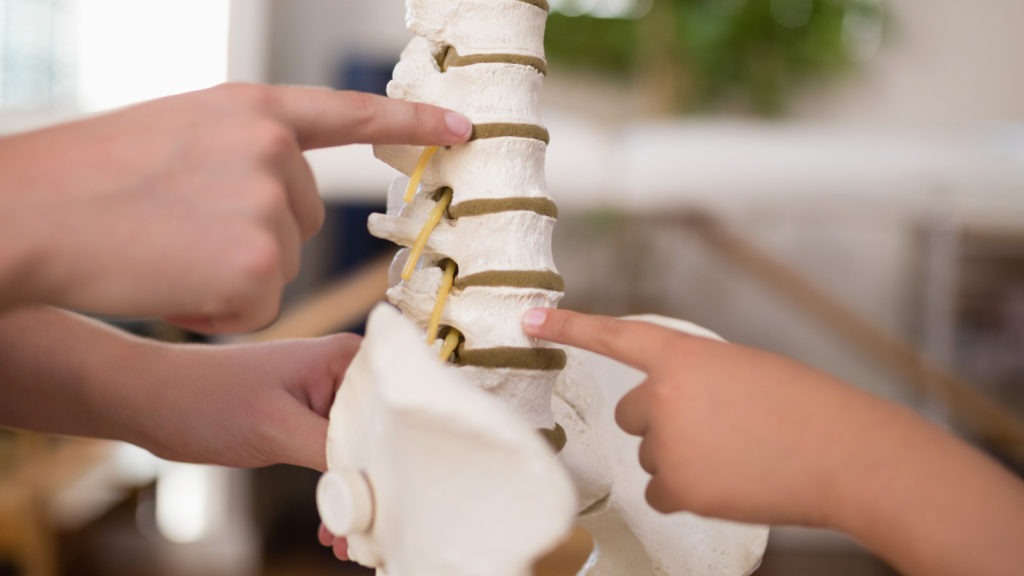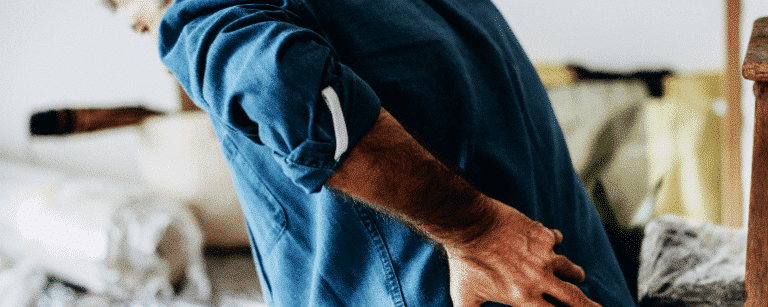Pain and tension in the shoulders, neck or head area can have various causes. Often, however, chronic pain is mainly due to a pelvic inclination. In order to avoid consequential damage in the event of initial symptoms, it is recommended to have the body examined for an inclined position of the pelvis and, in the event of a malalignment, to undertake early treatment.

A physical therapy , for which insoles are recommended, and exercises and measures to compensate for the pelvic inclination can be carried out. With the right shoe insoles and regular execution of certain movement sequences, the misalignment can be compensated and the pelvis finds itself in a better position.
Pelvic obliquity and its causes
The pelvis and sacrum are connected to each other. From there, the spine protrudes upwards and enables a straight posture. In addition, the hip joints are anchored in the pelvis, which means that the pelvis adapts to the legs as soon as they start moving.

All of these connections work smoothly when the pelvis is positioned reasonably straight. For most people, however, the perfect pelvis (pelvis) is not aligned horizontally, since people are never completely symmetrical. If the pelvis is a little crooked, that shouldn’t usually be a problem. But if the pelvic inclination is particularly pronounced, pain and blockages can already occur in adolescence, which can increase with advanced age.
But what are the exact causes of pelvic inclination and how can they be explained?
Different leg lengths
Anyone who has legs of different lengths tends to develop a sloping pelvis. If one leg is over 0.7 mm longer than the other leg, the pelvis will tilt more towards the shorter side, which will cause pain and blockages in the long term. Such a mostly congenital misalignment can be compensated for with a suitable elevation, for example with shoe insoles. The examination of the misalignment is ideally carried out by a physiotherapist who can recommend a custom-fit shoe insert.
Wrong movement patterns and attitudes
While some suffer from congenital misalignment of the pelvis, others virtually cause the misalignment. It is not all that infrequently that the cause of a pelvic tilt can be determined in one’s own movement pattern in everyday life.

A lack of exercise, long periods of sitting or standing, activities carried out on one side or postural problems can damage the pelvis in the long term and – as it is encouraged by itself – are subordinated to “functional pelvic inclination” in medicine. If the body is not moved enough or only stressed on one side, the result is an imbalance of the muscles or – in the worst case – a curvature of the spine with pain in the neck, head and shoulder area as a result.
Accidents, operations or prostheses
In the case of sudden incidents such as accidents or operations, the body suddenly comes to a standstill. If one half of the body or a part of the body has been injured on one side and has to be brought to a standstill, the body will strain the other, healthy side even more in order to be able to move. As a result, the stronger muscles and joints are moved more and the others are spared. It is obvious that ligaments can be shortened and misaligned. It is therefore important to start physiotherapy as soon as possible in order to bring the body back into its equilibrium and to prevent pelvic obliquity at an early stage, before the musculoskeletal system gets used to a misalignment.
Scoliosis (curvature of the spine)
The pelvis and spine are linked by the sacrum. Thus, a misalignment in the pelvic area will have a negative effect on the spine and vice versa, a curvature or wear and tear of the spine will damage the pelvis. Sometimes it is not possible to determine exactly whether pain in the back, neck, pelvic or shoulder area is due to the pelvis or to the spine. The fact is that both body regions should be kept equally healthy in order to avoid discomfort and impaired movement.
Pelvic obliquity: treatment and measures
It is important to see a doctor who will determine the exact cause and initiate appropriate therapy. For diagnosis, an external examination is carried out first, whereby the leg lengths are measured and the pelvic bones palpated, among other things. If there is a pelvic inclination, treatment is given depending on the cause and severity.
Orthopedic measures
If there is a difference in leg length, insoles or raised soles can compensate for the difference. If one leg is aligned with the other, the pelvis is prevented from tilting too much in one direction and the body finds itself in a horizontal position, so that incorrect posture can be avoided or corrected.
Physiotherapeutic measures against pelvic tilt
Misalignments and postural damage occur over several years and require lengthy training to be corrected. In physiotherapy, tired or overloaded muscles are first localized in order to then be trained in a targeted manner. The training includes bending the legs, special stretching and stretching exercises for the pelvis and thigh muscles, as well as holding certain positions. Usually there is also one Back school useful, in which the correct posture is trained when sitting, standing, running or lifting. Back exercises can also help straighten the pelvis. The muscle tissue is strengthened so that the pelvis is less stressed and finds a relaxed posture.

A pelvic obliquity can be corrected with appropriate physiotherapy. In the event of initial tension or even pain, immediate action should be taken in order to specifically eliminate deformities. In this way the pelvis remains permanently flexible and the musculoskeletal system is not impaired – neither now nor in old age.
